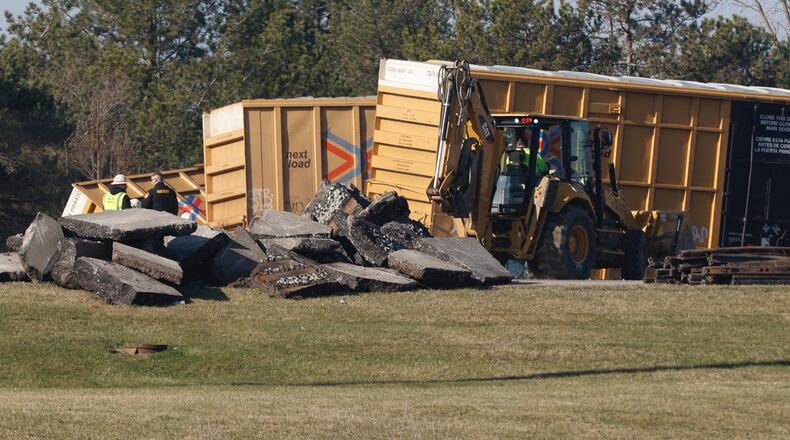DeWine said the Ohio EPA, Ohio State Highway Patrol and Ohio Emergency Management Agency were on the scene in Clark County at the site of the derailment.
Late this afternoon an @nscorp train derailed in Clark County. We don’t believe hazardous materials were involved. @OhioEPA, @Ohio_EMA, & @OSHP are on scene supporting first responders. President Biden and Secretary Buttigieg called me to offer help from the federal government.
— Governor Mike DeWine (@GovMikeDeWine) March 5, 2023
I have been briefed by FRA leadership and spoke with Gov. DeWine to offer our support after the derailment today in Clark County, Ohio. No hazardous material release has been reported, but we will continue to monitor closely and FRA personnel are en route.
— Secretary Pete Buttigieg (@SecretaryPete) March 5, 2023
More than 20 train cars out of 212 derailed Saturday near the Clark County Fairgrounds where the tracks cross Ohio 41 outside of Springfield. No one was injured in the accident and the cause of the derailment has not been determined.
Clark County EMA leaders said there were no known chemicals or hazardous material on the train.
“There is no indication of any injuries or risk to public health at this time. A crew from the owner/operator of the railway Norfolk Southern, the Clark County Hazmat team and Ohio Environmental Protection Agency each independently examined the crash site and verified there was no evidence of spillage at the site.”
U.S. Senator Sherrod Brown, D-Ohio was critical of the crash. He said it was the fourth train derailment by Norfolk Southern in recent months in Ohio, including the toxic train derailment in East Palestine.
“Sandusky, Steubenville, East Palestine, and now Springfield - four Norfolk Southern derailments in less than five months because this corporation has been more concerned with its profit margin than with Ohioans’ safety. Ohio communities should not be forced to live in fear of another disaster. It’s unacceptable - it’s why we must pass my bipartisan Railway Safety Act with Senator Vance, now,” Brown said.
Brown and Republican U.S. Sen. JD Vance of Ohio introduced the bipartisan legislation last week aimed at preventing future train disasters.
The bill will take a number of key steps to improve rail safety protocols, such as enhancing safety procedures for trains carrying hazardous materials, establishing requirements for wayside defect detectors, creating a permanent requirement for railroads to operate with at least two-person crews, increasing fines for wrongdoing committed by rail carriers, and more, Brown said.
About the Author

